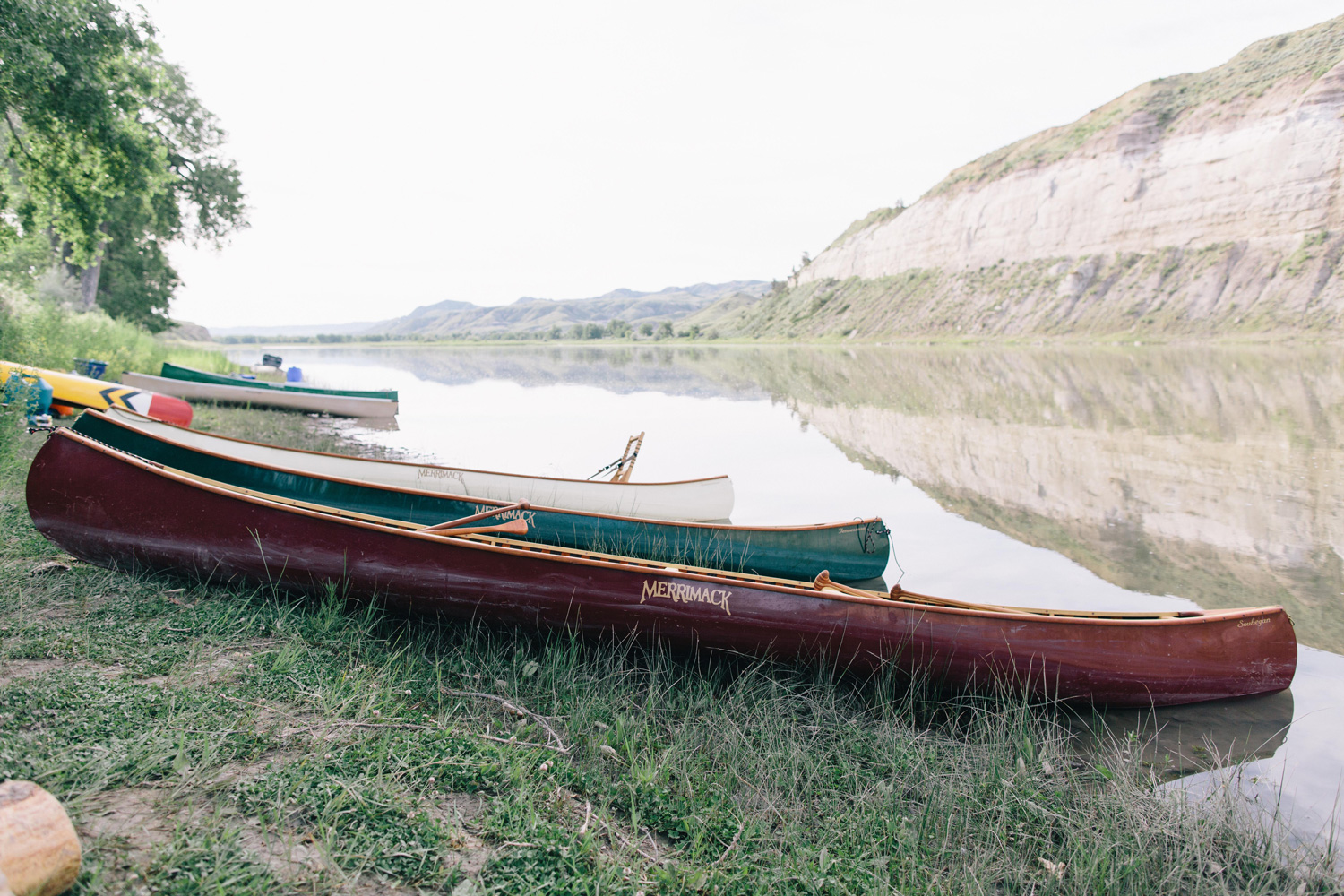
There are a variety of reasons to get out on the water. Maybe you’re spending time with family, maybe you’re looking to catch a few fish, or maybe you’re doing a week-long expedition (or perhaps a bit of all three). Sanborn Canoe Co. offers 6 different canoe models that each offer a unique tradeoff of traits that we believe will suit nearly any user. From the short and stable 13-foot Osprey canoe all the way up to the 17-foot Traveler, your paddling trips will dictate which canoe, or canoes, will be best for you.
Table of Contents
- Canoe Models
- Layups - Fiberglass Vs. Kevlar and Carbon Fiber
A Quick Look:
| Model | Length | ~ Weight (Fiberglass) | ~ Weight (Kevlar/Carbon Fiber) | Best Uses |
Approx. Capacity
|
| Solitaire | 11'9" | 31# | 28# | Solo Ultralight Trips Casual Paddling |
~ 325# |
| Osprey | 13' | 45# | 40# | Fishing, Hunting, Canoeing w/ Children & dogs |
600# |
| Baboosic | 14' | 40# | 36# | Solo Touring Freestyle |
550# |
| Tennessean | 14'6" | 50# | 46# | All-Purpose Solo/Tandem Fishing Canoeing w/ Children & dogs Weekend Wilderness Trips |
625# |
| Souhegan | 16" | 58# | 54# | Family Canoeing, Fishing, Optional 3rd Seat |
750# |
| Prospector | 16" | 57# FG | 53# | Extended Expeditions, Tandem Touring, Tandem Freestyle |
900# |
| Traveler | 17" | 57# | 53# | All-Purpose, Extended Expeditions, Optional 3rd Seat |
850# |
All Purpose:
The Tennessean, the Prospector, the Souhegan, and the Traveler are the best choices for those looking to do a bit of everything. Whether it’s a quick jaunt on the lake or river, a weekend trip in the Boundary Waters, or a spot of fishing, these boats will all get the job done. If you’re a novice paddler, or spending time on the water with younger children, you’ll want to focus on the Tennessean and Souhegan for their higher initial stability, but if additional space is needed the Traveler will offer much more space, and a very mellow paddling experience; maneuverable without being pointy, stable without being lethargic. More experienced paddlers may prefer the Prospector for its added maneuverability, though unloaded it will tend to catch more wind than the other choices.
Fishing/Hunting:
The Osprey was designed for exactly this use. Wide and stable enough to cast a fishing line while standing, it is also short enough to fit into narrower channels or bays for those harder to reach fishing spots. The Osprey is very shallow, meaning wind won’t push you around as much, but it won’t handle waves or stronger currents very well. If added capacity is needed, the Souhegan is also an excellent choice, keeping low to the water and including a keel for improved tracking.
Solo Touring:
While any boat can be paddled solo, for any amount of distance there are only a few choices, the Solitaire, the Baboosic, and the Tennessean. The Solitaire is designed for ultralight movement. Pack weight will need to be 25lbs or less for most users. The Baboosic is a purpose-built solo canoe; smaller brother to the Prospector, this canoe offers abundant maneuverability in a sleek, fast package. The heavier it is loaded, the better its tracking. If you need a canoe that can be used for solo trips along with tandem trips, then you’ll want the Tennessean. Only slightly longer, this canoe will track straighter and catch less wind when unloaded than the Baboosic, and of course a second seat means a second paddler can be added.
Family Paddling:
When canoeing with young children and/or pets, stability is vital. The Osprey, the Souhegan, and the Traveler are all good choices in this regard. The Osprey would be an ideal choice for ponds and smaller lakes, offering good stability but not designed for handling on moving water. The Souhegan steps up a bit of size and capacity, leaving room for more kids and handling better on larger lakes, and the Traveler is a good all-round choice for paddling on lakes and rivers with children, even having the option to add a third seat in the middle of the boat.
Extended Expeditions:
If you’re planning on everything from multi-day to multi-week trips, the Prospector and the Traveler are the canoe for you. Both offer ample space and weight capacity to carry all the gear you’ll need for days on end without resupply. The Prospector will tend to be a bit more maneuverable, with the Traveler tending to be a bit more stable, especially when lightly loaded.
The Layup: Fiberglass vs. Kevlar and Carbon Fiber
Every one of the models listed above is available in two different layups, which means they're constructed using a different set of materials to meet different needs. The classic option is to use Fiberglass for the construction. The outer layer is a colorful gel coat that adds durability and style to your canoe, then inside that is a couple layers of fiberglass. Fiberglass is lightweight, durable, and long-lasting. Our partners at Merrimack Canoes have been building these fiberglass canoes with wood trim since 1954, and there are still quite a few of those boats on the water even today. It's a lightweight option that makes for a really high-quality boat that's suitable for most uses. If you're using your canoe in more difficult areas along rocky rivers and shorelines, where some additional impact strength will be useful, you can also choose to upgrade to the Kevlar and Carbon Fiber layup. These materials share the same lightweight benefits of Fiberglass, while adding additional impact and shear strength. This makes the canoe stronger and more rigid, and more likely to remain structurally sound in the event of larger impacts or collisions.
